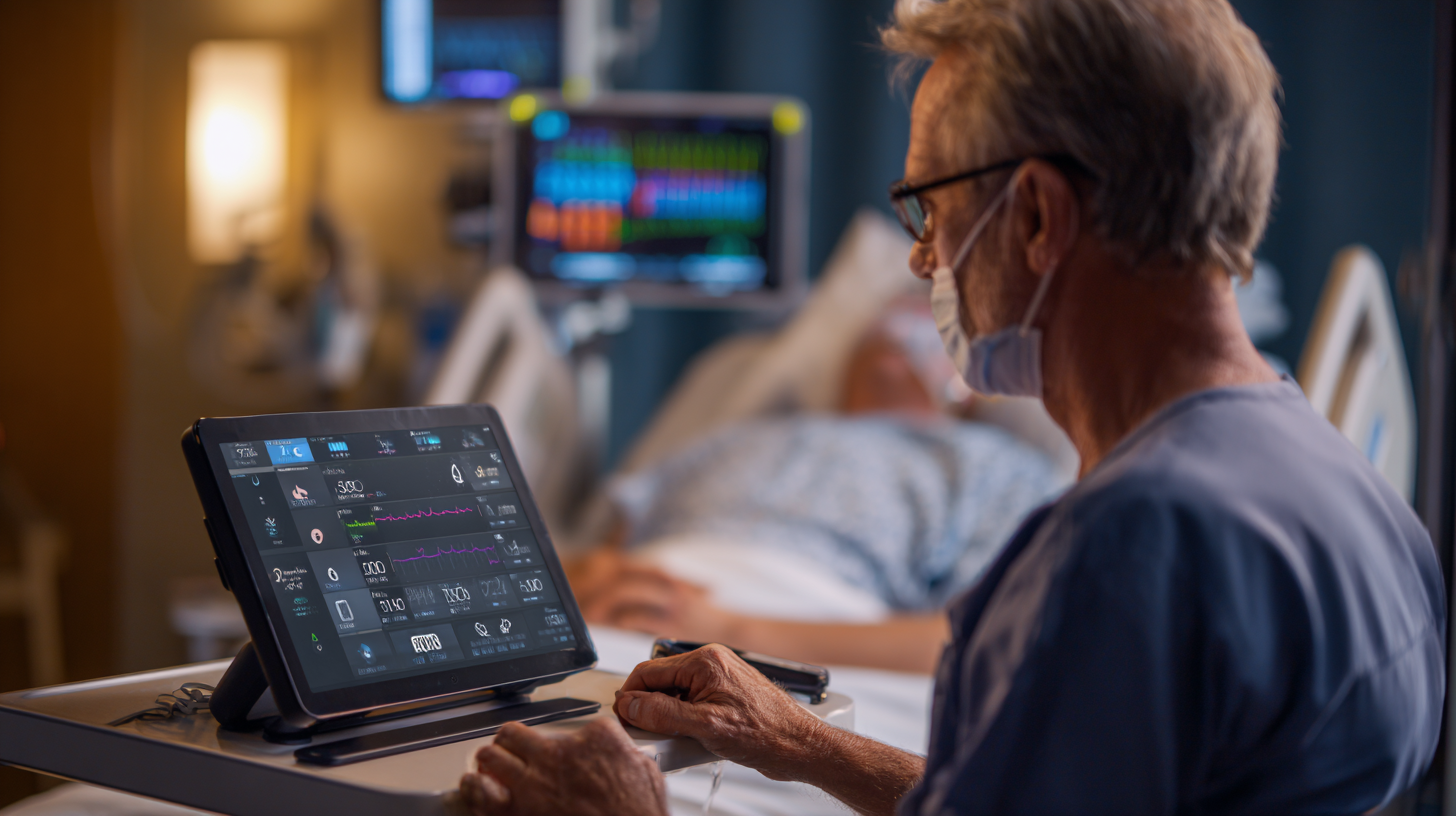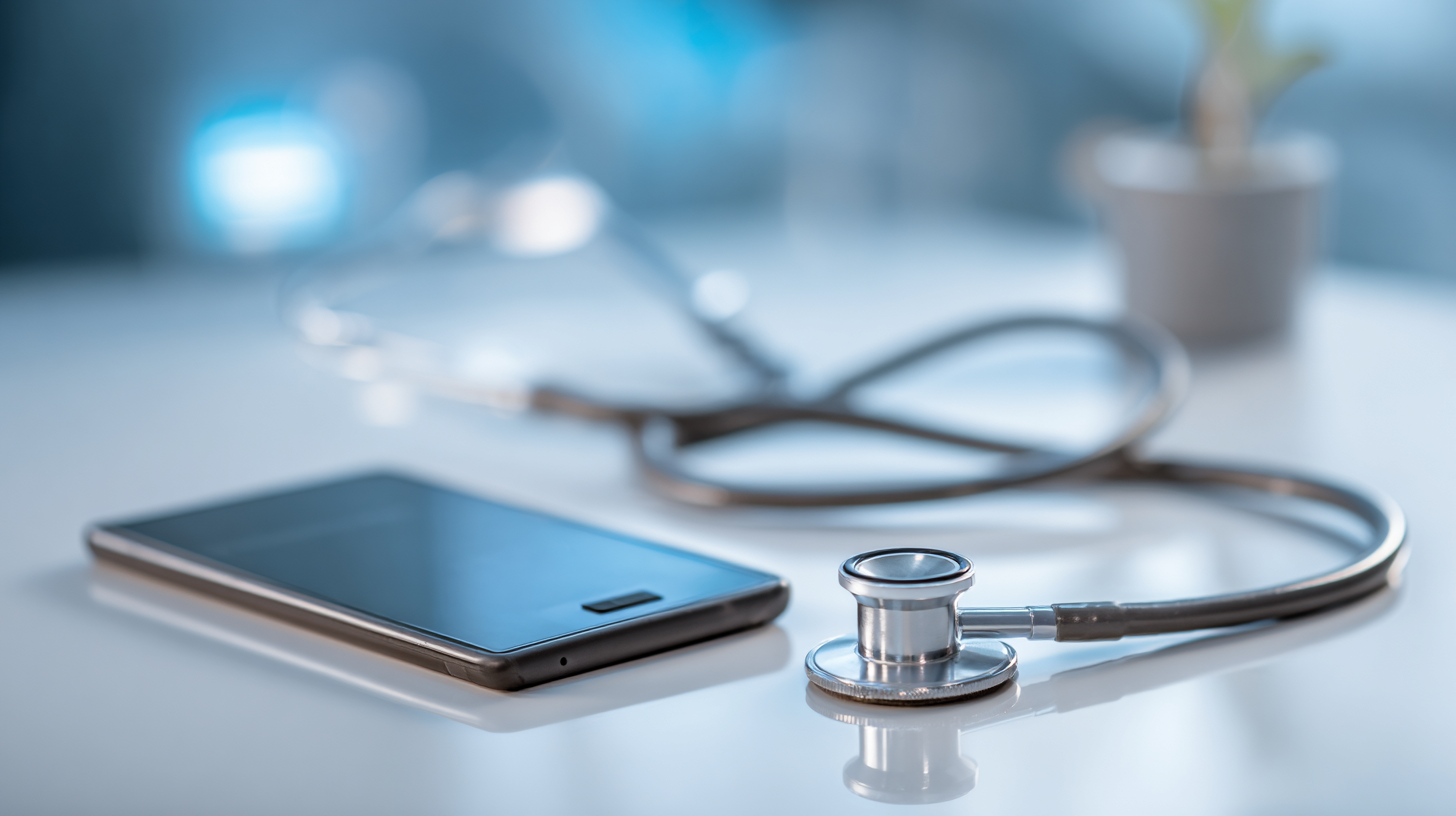10 Digital Strategies for Choosing the Best Remote Patient Monitoring Devices
 In today's rapidly evolving healthcare landscape, the integration of technology into patient care has reached new heights, particularly with the growing emphasis on Remote Patient Monitoring Devices. As we look toward 2025 and beyond, it is essential for healthcare professionals, providers, and organizations to adopt effective digital strategies to select the best devices that align with their needs and enhance patient outcomes.
In today's rapidly evolving healthcare landscape, the integration of technology into patient care has reached new heights, particularly with the growing emphasis on Remote Patient Monitoring Devices. As we look toward 2025 and beyond, it is essential for healthcare professionals, providers, and organizations to adopt effective digital strategies to select the best devices that align with their needs and enhance patient outcomes.
This ultimate guide will explore ten key digital strategies that not only streamline the selection process but also ensure that the chosen Remote Patient Monitoring Devices are effective, reliable, and user-friendly. With the right tools at their disposal, clinicians can foster greater patient engagement, improve health management, and ultimately drive innovation within the industry, paving the way for a more connected and proactive approach to healthcare.
Identifying Key Features in Remote Patient Monitoring Devices
When selecting remote patient monitoring devices, identifying key features is essential for ensuring effective health management. One of the primary attributes to consider is usability. Devices should be intuitive for both patients and healthcare providers. A user-friendly interface and straightforward instructions can significantly enhance patient compliance and make data collection seamless.
Another critical feature is data accuracy. Reliable devices must provide precise readings that healthcare providers can trust for diagnosis and treatment decisions. It's advisable to look for devices that are FDA-approved or have undergone rigorous testing standards, as these often guarantee a higher level of accuracy.
Finally, consider the connectivity options of the monitoring devices. A seamless integration with existing health systems is vital for efficient data transfer. Look for devices that offer various connectivity options, such as Wi-Fi, Bluetooth, or cellular, to ensure that health data can be easily shared in real-time with healthcare professionals.
Prioritizing these key features will help you choose the best remote patient monitoring devices for optimal health outcomes.
Evaluating Integration Capabilities with Existing Healthcare Systems
In the ever-evolving landscape of remote patient monitoring (RPM), integrating new devices with existing healthcare systems is crucial for maximizing patient outcomes and operational efficiency. According to a report by Deloitte, over 70% of healthcare providers believe that the integration of RPM devices into their health IT systems can significantly enhance patient engagement and contribute to better chronic disease management. The ability to seamlessly connect new monitoring devices to Electronic Health Records (EHR) and other systems ensures a continuous flow of patient data, reducing the risk of information silos and improving care coordination.
Furthermore, a study published by the Health Management Institute indicates that integrated RPM solutions can lead to a 20-30% reduction in hospital readmission rates. This underscores the importance of evaluating integration capabilities during the selection process for RPM devices. Features such as interconnectivity, compatibility with existing software, and ease of data sharing should be prioritized. Investing in devices that enhance interoperability not only streamlines workflows but also empowers healthcare teams to make informed decisions based on real-time patient data, ultimately leading to more personalized and effective care.
Integration Capabilities of Remote Patient Monitoring Devices
This chart compares five different dimensions of integration capabilities for remote patient monitoring devices with existing healthcare systems. Criteria include data interoperability, API availability, user interface integration, EHR integration, and security compliance.
Assessing User-Friendliness for Patients and Healthcare Providers
User-friendliness is a critical factor when selecting remote patient monitoring devices, as both patients and healthcare providers must find these tools accessible and efficient. In recent trends, the market for home healthcare beds is projected to grow significantly, reaching $214.39 million by 2032. This emphasizes the increasing demand for devices that not only cater to the patient's needs but also streamline processes for caregivers. Remote monitoring devices must offer intuitive interfaces and easy setup to ensure that users can operate them without extensive training, thereby enhancing overall satisfaction and compliance.
As the healthcare industry continues to integrate advanced technologies such as generative AI, the focus on user-friendliness becomes even more pertinent. These devices are now being designed with intelligent features that adapt to individual needs, allowing for a more personalized healthcare experience. Moreover, the rapid evolution of AI tools is enabling more effective data analysis and pattern recognition in patient monitoring, leading to better outcomes and optimized workflows. This transformation showcases the necessity of combining cutting-edge technology with ease of use, making patient engagement and provider operation seamless.

Comparing Data Security Standards Among Remote Monitoring Solutions
When selecting remote patient monitoring (RPM) devices, data security should be at the forefront of your decision-making process. Given the rise in cyber threats, ensuring that your chosen monitoring solution adheres to robust data security standards is crucial. According to a 2021 report by the Ponemon Institute, healthcare organizations experienced an average cost of $9.23 million per data breach, highlighting the financial implications of inadequate data protection. Furthermore, 60% of healthcare breaches are linked to unsecured medical devices, underscoring the urgent need for reliable security measures in RPM technologies.
The variations in data security standards among different RPM solutions can be significant. For instance, some devices comply with the Health Insurance Portability and Accountability Act (HIPAA), which sets stringent standards for protecting patient information, while others may only meet basic encryption protocols. A comprehensive analysis by Deloitte found that RPM solutions that implement advanced security measures, such as multi-factor authentication and end-to-end data encryption, can reduce security risks by up to 50%. As healthcare continues to embrace digital transformation, prioritizing data security in RPM device selection is not just a technical requirement; it is a critical factor in maintaining patient trust and safeguarding sensitive health information.

Understanding Cost-Effectiveness and Insurance Coverage Options
When considering remote patient monitoring (RPM) devices, understanding the cost-effectiveness and insurance coverage options is crucial. Many patients find themselves overwhelmed by the myriad of coverage choices available, similar to navigating the complexities of health insurance plans. It’s essential to evaluate not only the features and effectiveness of RPM devices but also how they fit within your budget and existing insurance policies. Look for devices that are covered by Medicare or your health insurance plan to minimize out-of-pocket costs.
Tips for evaluating cost-effectiveness include checking with your insurance provider about specific coverage for RPM devices and understanding any co-pays or deductibles. Additionally, consider participating in programs that might offer financial aid or subsidies for patients who need these devices but cannot afford them. Keep in mind that comprehensive care may involve ongoing expenses, so weigh the benefits of the device against its long-term costs.
Another important aspect is to research any potential limitations of your insurance plan regarding RPM devices. Some policies may only cover certain brands or types, or might require pre-authorization. Be proactive in clarifying these details before making a purchase to ensure you're making a well-informed decision that fits your healthcare needs and financial situation.
